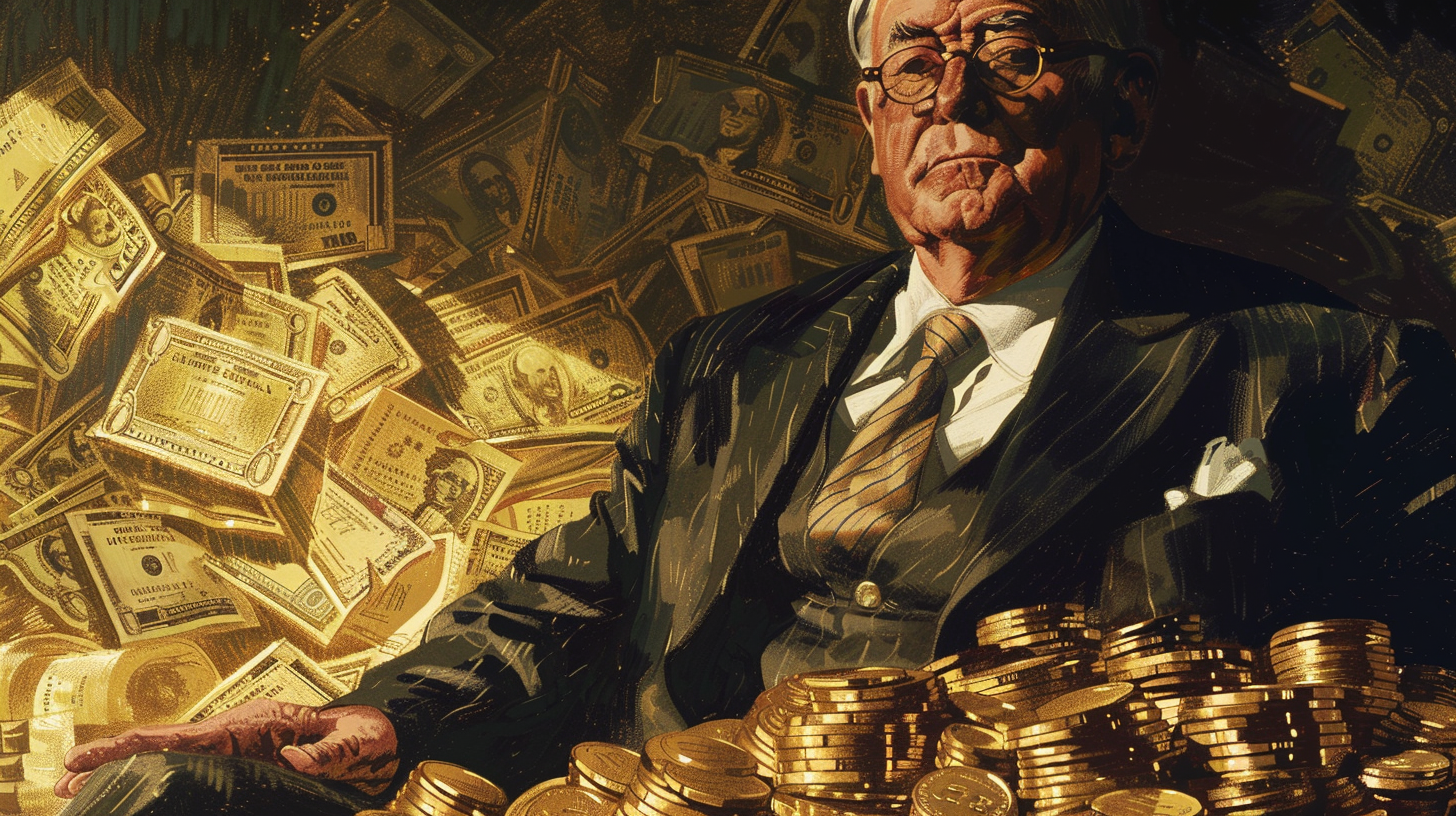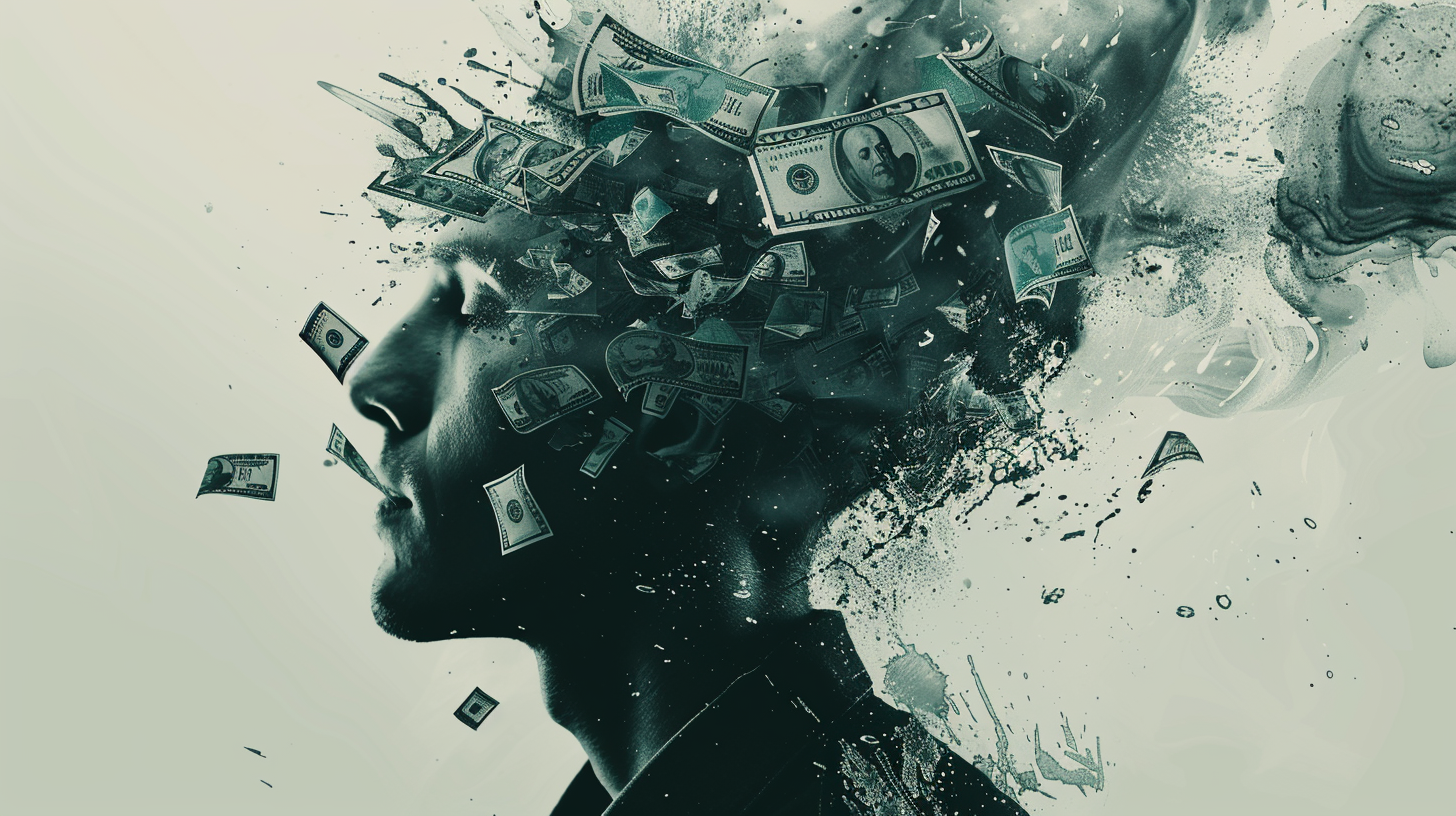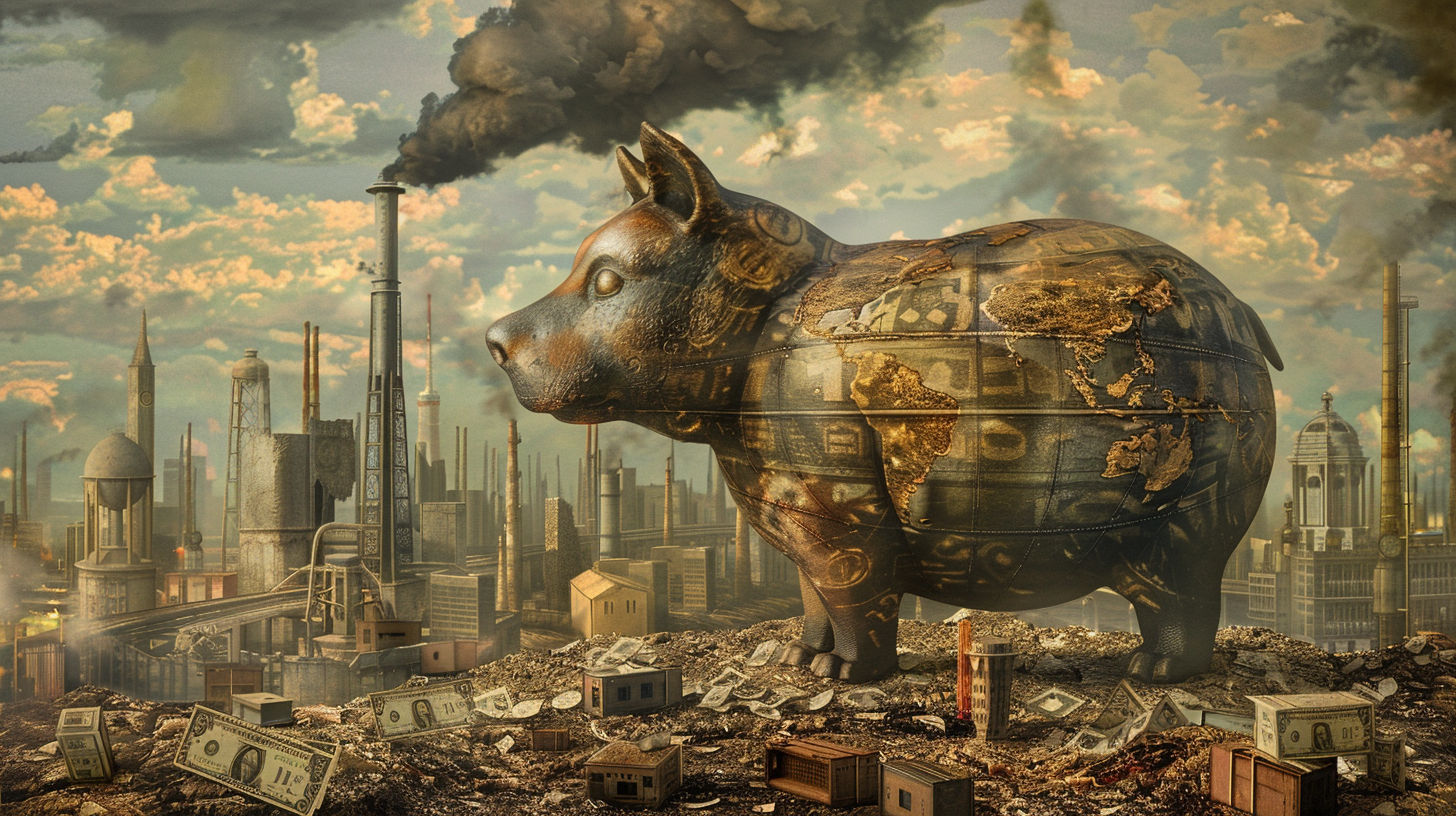Befuddled By Bubbles: The Greenspan Bernanke Era at the Fed
We have declared 2017 as the “Year of the Bubbles.” We’ve reported on the stock market bubble. We’ve reported on the student loan bubble. We’ve reported on the auto bubble. We even told you about a shoe bubble. And then there is the mother of all bubbles – the debt bubble. All of these bubbles are still floating around out there. Of course, at some point, one or more of them will pop.
All of this is the result of federal reserve monetary policy. Easy money blows up bubbles. Bubbles pop and set off a crisis. Rinse. Wash. Repeat. All we have to do is look back into recent history to identify the cause and effect of central bank monetary policy. Peter Schmidt takes us on a trip back through the last few decades to reveal just how the Fed has blown up bubbles and what happened when they popped.
![]()
The following was written by Peter Schmidt. Any views expressed are his own and do not necessarily reflect the views of Peter Schiff or SchiffGold.
Between 2000 and 2008, two of the largest financial bubbles in history – in technology stocks and housing, respectively – suffered spectacular collapses. Opinions vary, but some market commentators believe at the peak of the tech bubble, total stock market capitalization exceeded 180% of US GDP. To put this in perspective, the tech stock bubble was over twice the size of the 1920’s stock bubble![1] As large as the bubble in tech stocks was, it was child’s play compared to the housing bubble. When the US housing bubble collapsed, the credit losses were so large the entire worldwide banking system was considered to be in mortal danger.
One of the primary forces behind the 1913 founding of the Fed was to prevent financial crises. Logic then dictates if a major motivation behind forming a central bank is the prevention of a financial crisis, then a financial crisis that breaks out under the nose of a central bank must be due – at least in part – to mistakes of that bank. The Fed’s mistakes and its subsequent leading role in causing the housing bubble will be seen by reviewing speeches given by Alan Greenspan and Ben Bernanke that praised the housing bubble era Fed. In addition, a review of statements made in the wake of the tech bubble’s collapse will reveal senior Fed officials taking positions diametrically opposed to positions Alan Greenspan claimed formed the basis for the Fed’s policy toward bubbles – namely allowing bubbles to burst and dealing with the consequences later.
From its March 2000 peak to its October 2002 bottom the NASDAQ declined 80%. Throughout the 1990s no one cheered on the “new economy” more than the “maestro,” Alan Greenspan. After the bubble collapsed, Greenspan recognized a need to explain his and the Fed’s actions while the tech bubble grew. In August 2002 Greenspan gave a speech at the Fed’s conference in Jackson Hole. In this speech, which Jim Grant called “self-exculpating revisionism,” [2] Greenspan offered this rationale for the Fed’s actions during the late 1990s:
The struggle to understand developments in the economy and financial markets since the mid-1990s has been particularly challenging for monetary policymakers… We at the Federal Reserve considered a number of issues related to asset bubbles – that is, surges in prices of assets to unsustainable levels. As events evolved, we recognized that, despite our suspicions, it was very difficult to definitively identify a bubble until after the fact – that is, when it’s bursting confirmed its existence.”
Less than two years later, in January 2004, Greenspan would congratulate himself on the apparent success of the Fed’s strategy. In doing so he would expose the Fed’s role in creating the far more ruinous housing bubble.
There appears to be enough evidence, at least tentatively, to conclude that our strategy of addressing the bubble’s consequences rather than the bubble itself has been successful… As I discuss later, much of the ability of the U.S. economy to absorb these sequences of shocks resulted from notably improved structural flexibility. But highly aggressive monetary ease was doubtless also a significant contributor to stability.”[3]
The “monetary ease” – slashing interest rates – Greenspan was taking credit for here was not helping the economy heal. Instead, it was fueling an enormous bubble in housing with negative consequences can best be described as world-altering.
One month later, in February, Greenspan’s partner in economic ignorance, Ben Bernanke, gave a speech titled, “The Great Moderation.” In this speech, Bernanke would, unknowingly, provide further evidence of the Fed’s enormous role in fueling the housing bubble. Bernanke claimed the Fed’s monetary policy was a source of stability and helped to reduce variations in economic output. The irony in giving this speech at this time should not be lost. Bernanke’s speech, like Greenspan’s, betrays a total ignorance of the enormous housing bubble that was only a few weeks from peaking. (Homeownership peaked in April 2004!) With just these two speeches, the incompetence of the Greenspan/Bernanke and the leading causal role the Fed played in the housing bubble are demonstrated.
The Fed’s bubble befuddlement was not limited to a few speeches. For years on end, Fed officials will take positions in contradiction to those established by Greenspan in his Jackson Hole speech. For example, in July 2005 and in his capacity as head of the president’s council of economic advisors, Ben Bernanke was asked on CNBC if there was a housing bubble. He does not answer by saying bubbles can’t be seen until after they burst. Instead, he says the following;
Well, I guess I don’t buy your premise. It’s a pretty unlikely possibility. We’ve never had a decline in housing prices on a nationwide basis, so what I think is more likely is house prices will slow, maybe stabilize, might slow consumption spending a bit. I don’t think it will drive the economy from its full employment path.”
Later in October 2005, other Fed officials would also contradict Greenspan’s Jackson Hole speech. By then, homeownership had already peaked and the bubble had started to collapse. Amazingly – and evidence that economic ignorance infects the Fed to its core – two Fed economists investigated if there was a housing bubble. They – erroneously, of course – concluded home prices are “high but not out of line.” [4] Obviously, if Fed officials were investigating to see if a housing bubble existed, then they believed it could be observed without first having to collapse.
The most damning indictment of the bubble era Fed comes from other Fed officials. The most loquacious of these officials is current St. Louis Fed president James Bullard. Bullard’s largest failing would appear to be his attempts to give a sense of scientific legitimacy to Fed policies when these policies are based on nothing more substantial than the ephemeral and erroneous notions bouncing inside the heads of Bullard and his Fed colleagues. Nevertheless, Bullard does commit the mortal Washington D.C. sin of telling the truth from time to time. Among the truths Bullard betrayed was the one concerning the obvious nature of the recent stock and housing bubbles. In a September 2013 interview, Bullard said, “The bubbles we had in the past were gigantic and obvious.”[5] Later, in a November 2013 interview, he said the housing and tech bubbles were “blindingly obvious.”[6]
Amazingly, Alan Greenspan will eventually completely contradict Greenspan! Here is “Mr. Chairman”, as CNBC lovingly refers to him, discussing the Lehman Brothers failure in October 2013, “We missed the timing badly on September 15th, 2008. (The day Lehman Brothers went bankrupt, author). All of us knew there was a bubble.”[7] So which is it Mr. Chairman? Can bubbles be identified before they pop – as you indicate here – or do you have to wait until after they pop to confirm their existence as you said in Jackson Hole?
The review here demonstrates both the leading role the Fed played in creating the housing bubble – the January and February 2004 speeches – and the many mutually exclusive positions the Fed took on bubbles. In spite of being exposed in what is either a self-exculpating lie – bubbles can only be seen after they burst – or a sign of gross incompetence – the failure to see two of the largest financial bubble in history – no Fed official has ever been asked to explain or rationalize the Fed’s contradictory positions on bubbles. Whether anyone from the Fed is ever forced to do so or not, it is obvious the Fed officials have much to answer for concerning all the economic hardships their bubble befuddlement caused.
Peter Schmidt served six years in the Air Force and has spent the rest of his professional life in the petrochemical, oil refining and power generation industries. Peter has BS and MS degrees in mechanical engineering from Lehigh University and is a licensed professional engineer in California and Louisiana. Peter is finishing up his book, “Elites in Name Only – the Financial Crisis,” a comprehensive look at the people behind the 2008 financial crisis. He also runs the website the92ers.com, which provides an overview of the 50 people most responsible for causing the 2008 crash.
NOTES
[1] Marc Faber, “The Monetization of the American Economy,” DailyReckoning.com, January 16, 2002 https://dailyreckoning.com/the-monetisation-of-the-american-economy/ [2] Jim Grant, Mr. Market Miscalculates, Axios Press, Mt. Jackson, VA, 2008, pp. 241 [3] “Risk and Uncertainty in Monetary Policy”, Remarks by Chairman Alan Greenspan at the Meetings of the American Economic Association, San Diego, CA. January 03, 2004 https://www.federalreserve.gov/boarddocs/speeches/2004/20040103/default.htm [4] Jonathan McCarthy and Richard W. Peach, “Is there a Bubble in the Housing Market Now?” Federal Reserve Bank of New York, 2005 https://papers.ssrn.com/sol3/papers.cfm?abstract_id=923867 [5] Steven C. Johnson, “Fed Need Not Rush to Taper While Inflation is Low,” September 20, 2013, Reuters, https://www.reuters.com/article/us-usa-fed-bullard/fed-need-not-rush-to-taper-while-inflation-is-low-bullard-idUSBRE98J0BI20130920?feedType=RSS&feedName=politicsNews [6] Matthew J. Belvedere, “Fed’s Bullard: $1-trillion a year QE pace torrid,” CNBC.com https://www.cnbc.com/2013/11/04/feds-bullard-weve-made-substantial-progress-in-us-labor-markets.html [7] Matthew J. Belvedere, “Bubbles and leverage cause crisis: Alan Greenspan”, October 23, 2013 CNBC, http://www.cnbc.com/id/101135835Get Peter Schiff’s most important Gold headlines once per week – click here – for a free subscription to his exclusive weekly email updates.
Interested in learning how to buy gold and buy silver?
Call 1-888-GOLD-160 and speak with a Precious Metals Specialist today!




 As fiscal imbalances persist, driven by coercive measures and artificial currency creation, the middle class faces erosion and purchasing power dwindles. But as the world hurtles towards a potential reckoning, the lingering question remains: can this precarious balance last, or are we teetering on the brink of a cataclysmic economic shift?
As fiscal imbalances persist, driven by coercive measures and artificial currency creation, the middle class faces erosion and purchasing power dwindles. But as the world hurtles towards a potential reckoning, the lingering question remains: can this precarious balance last, or are we teetering on the brink of a cataclysmic economic shift? Beneath the veneer of headline job gains, the American economy teeters on the brink: native employment dwindles as part-time and immigrant jobs surge. Government hiring camouflages looming recession warnings. Inflation and political blunders worsen the crisis, fueling public outrage at the establishment’s mishandling of the economy.
Beneath the veneer of headline job gains, the American economy teeters on the brink: native employment dwindles as part-time and immigrant jobs surge. Government hiring camouflages looming recession warnings. Inflation and political blunders worsen the crisis, fueling public outrage at the establishment’s mishandling of the economy. On April 5 1933, Franklin D. Roosevelt abandoned the gold standard, wielding questionable legal power amidst America’s dire economic depression. His whimsical approach to monetary policy, including coin flips and lucky numbers, unleashed unprecedented inflation and price increases that have since amounted to nearly 2500%. Our guest commentator explores this tragic history and the legacy […]
On April 5 1933, Franklin D. Roosevelt abandoned the gold standard, wielding questionable legal power amidst America’s dire economic depression. His whimsical approach to monetary policy, including coin flips and lucky numbers, unleashed unprecedented inflation and price increases that have since amounted to nearly 2500%. Our guest commentator explores this tragic history and the legacy […] Welcome to the world of modern economics where the term “inflation” no longer signifies the increase in the quantity of money, but has evolved into a plethora of buzzwords. From “shrinkflation” to “greedflation,” these new terms and semantic shifts are by no means harmless but a manipulation of popular sentiment. Von Mises said they play […]
Welcome to the world of modern economics where the term “inflation” no longer signifies the increase in the quantity of money, but has evolved into a plethora of buzzwords. From “shrinkflation” to “greedflation,” these new terms and semantic shifts are by no means harmless but a manipulation of popular sentiment. Von Mises said they play […] Assuming CPI measurements are not understatements, the dollar’s value has plummeted by a staggering one-fifth since 2020, yet, rather than acknowledging its role in fueling this economic turmoil, the Biden administration deflects, casting capitalism and corporate greed as the villains. The latest February CPI data show more signs of the upcoming inflation bloodbath.
Assuming CPI measurements are not understatements, the dollar’s value has plummeted by a staggering one-fifth since 2020, yet, rather than acknowledging its role in fueling this economic turmoil, the Biden administration deflects, casting capitalism and corporate greed as the villains. The latest February CPI data show more signs of the upcoming inflation bloodbath.